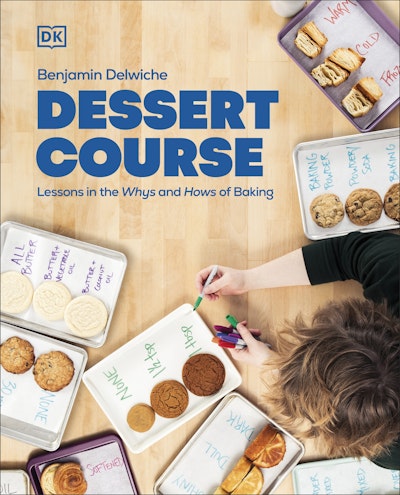The ultimate guide for making dinner rolls from scratch, from Dessert Course.
Yield: 12 rolls
Prep Time: 20 minutes
Inactive Time: 2½ hours
Bake Time: 20 to 25 minutes
INGREDIENTS
- ¼ cup (57g) whole milk
- ½ cup (113g) water
- 1¼ teaspoons instant yeast
- 1 large egg
- 2½ cups (350g) all-purpose flour
- 2 tablespoons (25g) granulated sugar
- 2 tablespoons (28g) unsalted butter, softened, plus 2 tablespoons (28g), melted for brushing
- 1 teaspoon table salt
- 1 tablespoon flaky salt, for sprinkling on top
SPECIAL EQUIPMENT: - Stand mixer with the hook attachment
- 9 x 13-inch (23x33cm) baking pan
METHOD
-
Add the milk, water, and yeast to the bowl of a stand mixer. Let sit for one minute to allow the yeast time to dissolve.
-
Add the egg, flour, sugar, softened butter, and table salt to the mixing bowl.
-
Start mixing on low speed until the dough comes together. Turn up the speed to medium-low and mix until the dough reaches full gluten development and passes the windowpane test (see illustration below) (approximately 7 to 10 minutes).
-
Add the dough to a lightly greased bowl and cover with plastic wrap. Let rise at room temperature for an hour or until approximately doubled in size.
-
Remove the dough from the mixing bowl, deflate, and transfer it to a lightly floured work surface. Divide the dough into 12 equal pieces (approximately 53g each) and shape into rounds.
-
Prepare the baking pan with a sheet of parchment paper and evenly space the dough balls in the pan. Cover with a lid or apiece of lightly greased plastic wrap and let rise (proof) for an hour to an hour and a half or until it's nearly doubled to tripled in size and passes the poke test (see illustration below).
-
In the final 30 minutes of proofing, preheat the oven to 375° F(190°C).
-
Bake the rolls for 20 to 25 minutes or until golden brown.
-
Remove from the oven, brush with the melted butter, sprinkle with flaky salt, and let cool in the pan for 5 to 10 minutes before moving to a baking rack to cool completely.
Why The Steps Are Important
Step 3
When wheat flour and water mix, two proteins in the flour (gliadin and glutenin) unwind and begin to form a flexible web that helps form the structure of bread dough. One way to develop gluten is to work the bread dough and force this elastic network to form. Stopping short of full gluten development (without the benefit of an extended rest time, as we will see in the next section) would lead to a short and dense final product instead of the tall and fluffy one we are after. Technically, it is possible to overmix and over develop gluten but I have only ever seen or heard of that happening in large industrial mixers that have power that goes far beyond mixing by hand or even that of a typical home stand mixer
Step 6 (see photo)
Properly proofed dough will spring back slightly when gently pressed. If the dough springs back quickly and completely, there has not been enough time for the dough to rise. T he result is a roll or loaf of bread that can burst as it bakes and has a dense interior texture. If the dough does not spring back at all, the roll is likely overproofed. By the time the dough hits the heat of the oven, it is prone to deflating and developing a coarse interior.














